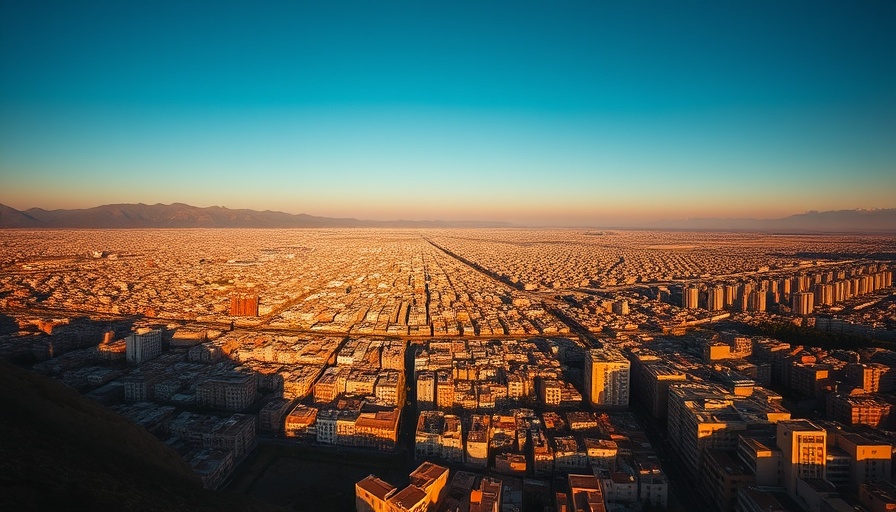
The Water Crisis in Iran: A Dire Situation
As spring unfolds, the people of Iran are facing a severe crisis that affects not only their livelihoods but their very survival. Iran's National Water Information and Data Office reported a staggering 28 percent drop in water flow to dam reservoirs compared to last year, with some dams now operating at less than 15 percent of their capacity. The approaching Persian New Year, typically a time of celebration and community, has turned into a somber reflection of what might lie ahead if water shortages continue.
The Human Cost of Water Scarcity
The ramifications of this crisis extend beyond agricultural impacts and into the daily lives of families. In cities like Tehran, where 19 million residents depend on dwindling water resources, simple acts such as taking showers or cooking become daunting challenges. One Tehran resident expressed her anxiety, stating, "They're saying on TV that there may not be any water left for us tomorrow. I go to bed every night worrying." Such sentiments resonate with many, highlighting the mental and physical toll this crisis has on families.
Urbanization and Mismanagement: Underlying Causes
The root causes of this alarming trend are multifaceted. Experts cite urban expansion and poor management of water resources as significant contributors to the current predicament. President Masoud Pezeshkian noted that as Tehran expands, it becomes increasingly difficult to sustain current consumption levels. The over-reliance on digging deeper wells without addressing the underlying issues is a temporary fix that only prolongs the inevitable crises. Sustainable solutions, like transitioning to sustainable agriculture practices and promoting renewable energy, are crucial to alleviating the situation.
Far-Reaching Implications: Economic and Environmental
As Iran grapples with water shortages, the consequences spread to other sectors, notably energy. Kaveh Madani, director of the UN University Institute for Water, Environment, and Health, warns that this is a crisis of “water bankruptcy,” indicating that just as an overdrawn bank account leads to financial ruin, so too does over-extraction of water lead to economic instability. Such challenges require immediate attention, particularly as they relate to environmental conservation and sustainable development.
Steps Toward a Sustainable Future
What can be done to mitigate the pressing water crisis? First and foremost, communities must embrace water conservation practices. Educating the public about sustainable living, eco-friendly products, and water-saving techniques can drive significant change. Furthermore, adopting technologies for water recycling and sustainable farming methods can play a critical role in ensuring that water resources are utilized more effectively.
Moreover, policies must be enacted that not only manage current water resources wisely but also invest in alternatives like rainwater harvesting and green design. Economic incentives for farmers to adopt regenerative practices could bolster food security while conserving precious water resources.
A Call to Action
The situation in Iran is a wake-up call for many around the globe. As we witness similar issues arising in various regions due to climate change, it becomes imperative for individuals and communities to advocate for sustainable practices. By supporting local and eco-friendly initiatives, and holding governments accountable for their resource management strategies, we can aspire to a future where crises like water scarcity are met with resilience rather than despair. Join the conversation around sustainability and unite for collective action to address our global challenges!
 Add Row
Add Row  Add
Add 



Write A Comment